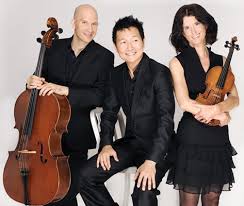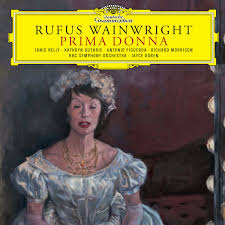Friday, May 22, 2016, 19 h 30 at the / Vendredi, 22 Mai à 19 h 30 à la Chapelle Historique du Bon-Pasteur
Members /
Membres
Julie-Anne Derome : violin / violon
Gabriel Prynn: cello / violoncelliste
Wonny Song: piano / piano
The second work by Uriel Vanchestein was
commissioned by the Trio and premiered in this concert. Cerebral in approach,
the composer told me he had no feeling – no sentiment behind the piece. It was really an
intricate play of notes in the sonata – rondo form of four basic notes: F, E,
D# and C# used in a motif in three parts. The piece was called Création, and
compared to the first piece, it was not nearly as interesting for me, despite
the grand variety of instrumental application. It would be a marvellous piece
put to a ballet of some sort as Stravinsky did in The Rite of Spring.
The third work
performed was titled On the wake of the
wind for violin, and the composer David Eagle definitely succeeded in
conjuring up images of the wind on water and the transformative mutations of
turbulence. Inspired by the poem written by Daniel David Moses. I thoroughly
enjoyed the fact that the computer was subtly used to create an echoing sound
at the beginning or the tail end of phrases. It was as if the wind was dying
out and new gusts came into the air. The electronic aspect of this work was
masterfully planned, and the effect was wonderful.
Finally, my favourite
work of three continuous parts was composed by the genius, François-Hugues
Leclair. Titled, Hymnen an de Nacht (Hymn
at Night), this astounding work – commissioned by Trio Fibonacci – was
positively inspirational. I could feel night coming on, and then I was led into
its mysterious qualities of its magical darkness. The piece opened with the
strings inside the piano being brushed. Here the bows of the artists were set
down to create the dying down of light as night begins to ascend.
The piano was muted several times so the inside strings when ‘brushed” would
create their own tonal lines. It was so ethereal. Ever-so quiet slides
up and down the string instruments then came into play as the artists returned
to their instruments; good thing violinist, Julie-Anne Derome had taken
off her high-heel shoes to avoid any sound as she returned to her violin.
Nighttime held me in
its grip. The ending part of the piece which offered moving harmony in
ascension was god-like.
Trio Fibonacci pulled
off a remarkable feat playing this highly interesting and challenging program.
Their timing and virtuoso attack perfectly conveyed the excitement and
ever-changing contrasts that marked each work. This composition fittingly
marked the finality to the Trio’s programming season
Bravo!
Trio Fibonacci’s
2015-2016 season will take place on October 13th inside Bourgie
Hall, Montreal.
The program will feature the music of Robert and Clara Schuman, and that of
Johannes Brahms. I can hardly wait!
For more information, visit: www.triofibonacci.com




















